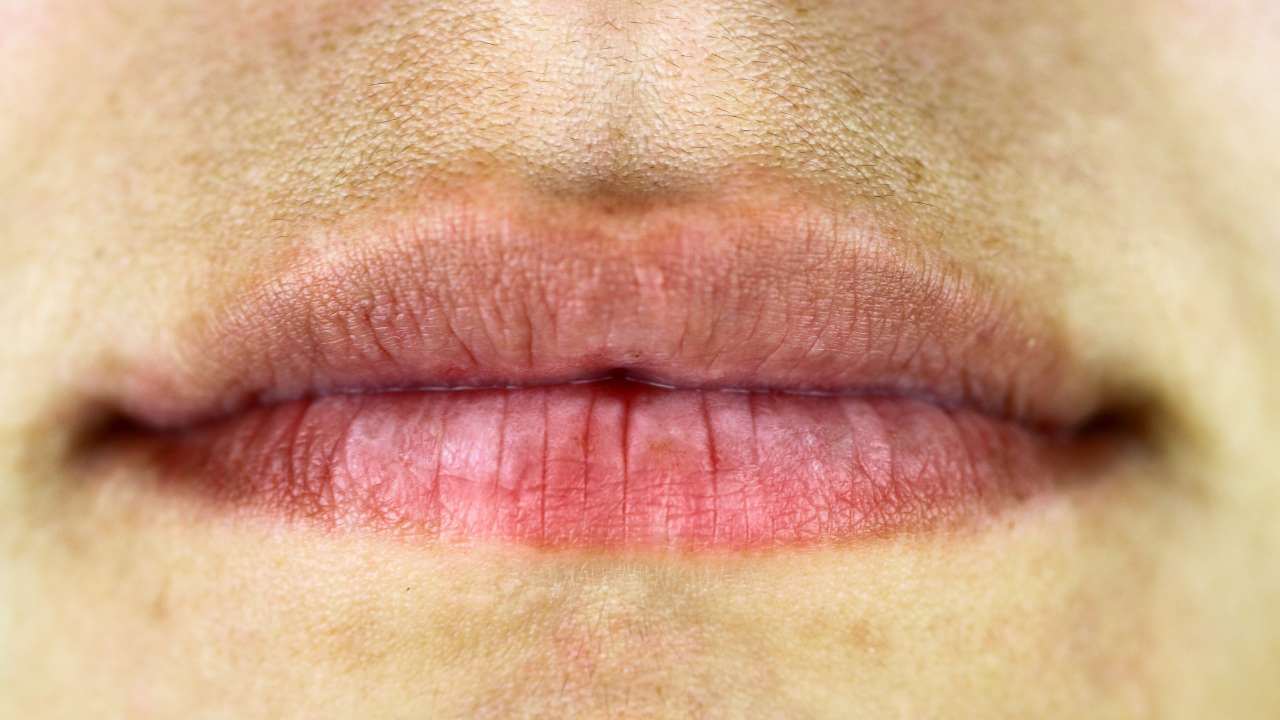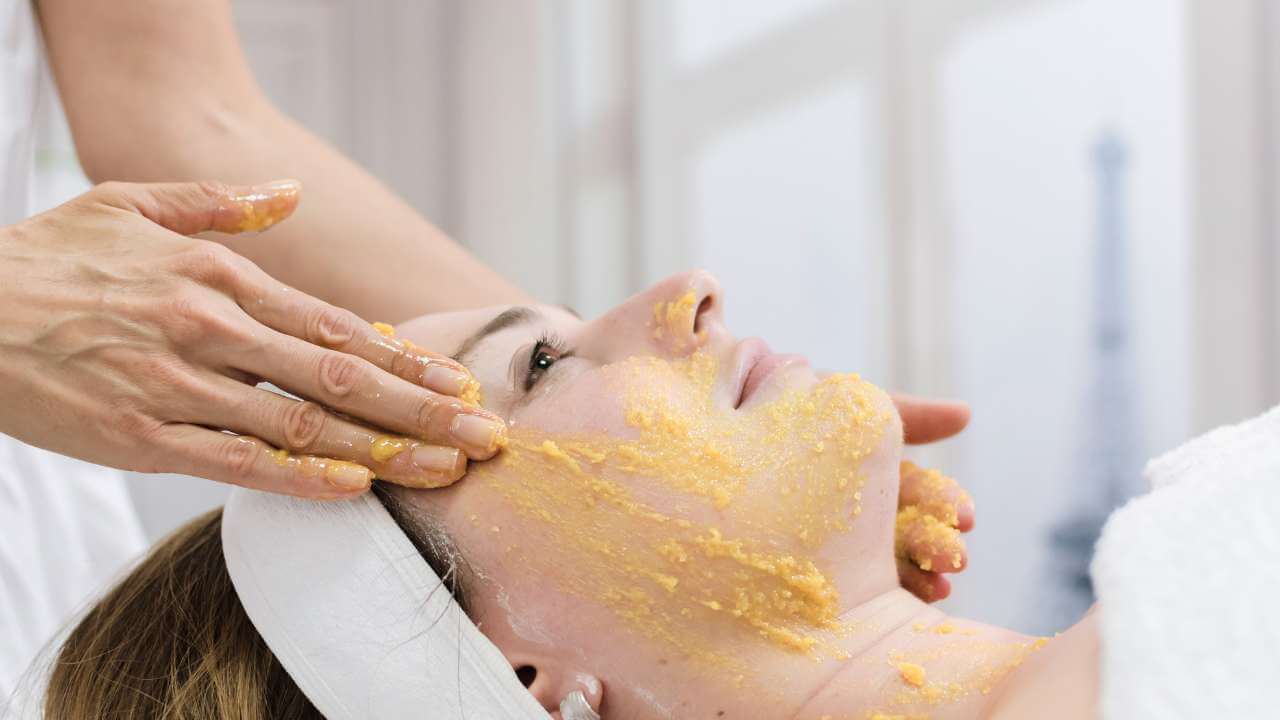Do you struggle with hyperpigmentation and dark patches around your mouth? It can be frustrating to deal with, but don't worry, help is on the way!
Hyperpigmentation around the mouth is a common problem for many people. This condition occurs due to many reasons, causing dark patches and skin darkening to appear around the mouth. But why do dark areas happen around the mouth specifically? Well, the skin around your mouth is thinner and more delicate, making it more prone to damage and the accumulation of dead skin.
Wouldn't it be great to have smooth, even-toned skin around your mouth? No more feeling self-conscious or hiding your smile!
With the right knowledge and tools, you can effectively treat hyperpigmentation and finally achieve the bright, radiant skin you desire.
So, if you're ready to say goodbye to dark skin and dark spots around your mouth, keep reading! In this article, we'll dive into the causes of hyperpigmentation and share tips and tricks to help you shed that dead skin and reveal beautiful, glowing skin.
What is Hyperpigmentation?
Hyperpigmentation is a skin condition characterized by dark areas of skin, which may appear as dark brown, gray, or black spots. It happens due to excess melanin production by the skin, the pigment responsible for giving color to our skin, hair, and even our eyes.
Melanin is produced by cells called melanocytes, and when they become overactive or damaged due to trauma to the skin, they can produce too much melanin, leading to hyperpigmentation.[1] This condition can occur in any part of the body, including the face, neck, arms, and legs. It can be triggered by factors such as excessive exposure to the sun, hormonal changes, post-inflammatory hyperpigmentation caused by allergic reactions, and various other skin injuries.

Causes of Hyperpigmentation Around the Mouth
1․ Melasma
Hormone changes during pregnancy can trigger the production of melanin, leading to a skin condition called melasma.[2] This cause of hyperpigmentation affects about one-third of all pregnant women.
Melasma causes splotchy dark skin patches to appear primarily on the face, including the forehead and cheeks, as well as upper lip pigmentation around the mouth. In many cases, hormonal changes during menopause can also lead to melasma in women.
2․ Genetics
In many cases, hyperpigmentation can be a symptom of an underlying genetic condition, such as Peutz-Jeghers syndrome, which causes dark spots to appear on the lips, gums, and inside of the mouth.[3]
Another condition associated with hyperpigmentation is Addison's disease, also known as primary adrenal insufficiency. This rare disorder is characterized by the inadequate production of essential hormones cortisol and aldosterone due to damage or dysfunction of the adrenal glands. The hyperpigmentation observed in Addison's disease is a result of increased adrenocorticotropic hormone (ACTH) secretion, which stimulates melanocyte-stimulating hormone (MSH) production, leading to an increase in melanin synthesis and ultimately causing the darkening of the skin.
3․ Side Effects of Certain Medications
Certain medicines can also cause hyperpigmentation as a side effect.[4] Oral contraceptives, also known as birth control pills, are one example. These pills contain hormones that can trigger melanin production, leading to hyperpigmentation. In some cases, the pigmentation may not appear until several years after starting the medication.
Other drugs that can cause hyperpigmentation include those that make the skin more sensitive to sunlight, such as certain antibiotics and chemotherapy drugs. These medications can cause a phototoxic reaction, which leads to hyperpigmentation in areas exposed to sunlight.
4․ Vitamin Deficiencies
Vitamin deficiency can also contribute to the development of hyperpigmentation and dark areas around the mouth. In particular, deficiencies in vitamin B12, folic acid, and vitamin D have been linked to the condition.[5] These vitamins are essential for the production of healthy new skin cells, and a lack of them can lead to abnormal pigmentation.
5․ Exposure to the Sun
Sun exposure is one of the most common causes of hyperpigmentation. When our skin is exposed to the sun's UV rays, it triggers the production of melanin, which is our skin's natural defense against UV damage. However, excessive sun exposure, or the use of tanning beds, can cause an overproduction of melanin, leading to hyperpigmentation.
UV rays can cause two types of hyperpigmentation: freckles and solar lentigines. Freckles are small, flat brown spots that appear on areas of the skin that are frequently exposed to the sun, such as the face, neck, and arms. Solar lentigines, also known as sun spots, age spots, or liver spots, are larger, flat brown spots that typically appear on the face and hands.
Treating Dark Skin Around the Mouth
Dark skin around the mouth can be a concern for many individuals, but fortunately, there are various treatment options available. From simple lifestyle changes and skincare products to more advanced medical treatments like chemical peels, corticosteroids, cryotherapy, and laser therapy, you can find an effective solution tailored to your needs. Explore these options below to help restore your skin's natural radiance.
Lifestyle Changes:
- Avoiding sun exposure by staying out of the sun, wearing sunscreen, and wearing protective clothing.
- Stopping any medications that may be causing it.
- Taking vitamins to correct any nutritional deficiencies.
Skin Care Products:
- Azelaic acid: Helps to reduce the production of melanin in the skin.
- Grape seed extract: Is highly effective in addressing hyperpigmentation due to its rich content of antioxidants, particularly proanthocyanidins. These compounds work by inhibiting melanin production and promoting skin cell regeneration, resulting in a more even complexion and reduced appearance of dark marks.
- Glycolic acid (alpha-hydroxy acid): Exfoliates the skin to remove dead skin cells and fade hyperpigmentation.
- Hydroquinone: Blocks the production of melanin in the skin to lighten dark spots.
- Licorice extract: Is present in many skincare products and helps address hyperpigmentation due to its active compound, glabridin. This compound possesses anti-inflammatory properties, which aid in reducing the appearance of dark spots and promoting a more even complexion.
- Kojic acid: Is a naturally occuring ingredient found in mushrooms and can also be derived through the fermentation process of Asian foods such as soy sauce, rice wine, and sake. Kojic acid inhibits the formation of the amino acid tyrosine to reduce the amount of melanin produced by the skin. This skin lightening ingredient can be found in many beauty products such as kojic acid cream, skin-brightening serums, and kojic acid soap.
- Salicylic acid: Exfoliates the skin to remove dead skin cells and fade hyperpigmentation.
- Tretinoin: Helps to increase skin cell turnover and fade hyperpigmentation.
- Vitamin C or B3 (niacinamide): Helps to reduce the production of melanin in the skin and fade hyperpigmentation.
Other Multiple Treatments:
- Chemical peels: A procedure in which a chemical solution is applied to the skin to exfoliate and remove the outer layers of the skin. Chemical peels can help to fade hyperpigmentation and improve the overall appearance of the skin.
- Corticosteroids: Reduces inflammation and suppresses melanocyte activity, leading to a decrease in melanin production. However, potential side effects include skin thinning, irritation, and steroid-induced acne. The dosage and duration of treatment should be determined by a healthcare professional, as prolonged use can lead to more severe side effects.
- Cryotherapy: Liquid nitrogen is used to freeze and destroy the dark patches of skin caused by hyperpigmentation. This treatment is typically used for smaller areas of hyperpigmentation.
- Laser Therapy: A laser is used to target dark pigments in the skin and break them down, allowing the body to absorb and remove them naturally. Laser treatment is typically used for larger areas of hyperpigmentation or deeper, more stubborn pigmentation.
It is important to note that not all treatments may work for everyone and some treatments may take longer to produce visible results. It is best to consult a dermatologist to determine the best course of action for your specific case of hyperpigmentation.

Natural Remedies to Reduce Pigmentation Around the Mouth
While there are many medical treatments available for mouth hyperpigmentation, some people prefer to use home remedies to help fade dark spots and even out skin tone. Here are some natural remedies that may help treat hyperpigmentation:
1․ Lemon Juice
Lemon juice contains citric acid and is rich in vitamin C, which has been shown to have natural skin-lightening properties.[6] Simply apply fresh lemon juice to the affected area with a cotton ball and leave it on for 10-15 minutes before rinsing off with cool water. It's important to avoid sun exposure after using lemon juice as it can make the skin more sensitive to UV rays.
2․ Aloe Vera
Aloe vera is a natural skin-soothing agent that can also help fade dark spots and lighten the skin.[6] Apply fresh aloe vera gel to the affected area and leave it on for haf an hour before rinsing off with warm water. This can be done daily.
3․ Green Tea Extracts
Green tea contains antioxidants that can help reduce inflammation and lighten the skin.[7] Brew a cup of green tea, let it cool down, and apply it to the affected areas with a cotton ball. Leave it on for 10-15 minutes before rinsing off with cool to warm water.
4․ Turmeric Powder
Turmeric has natural skin-lightening properties and is also an anti-inflammatory agent.[8] Mix half a tablespoon of turmeric powder with 2 tablespoons of gram flour and milk, rose water, or honey to create a thick paste and apply as a face mask to the affected areas. Leave it on for 15-20 minutes before rinsing off with cool or cold water.
5․ Tomato Pulp & Olive Oil
These are both excellent natural home remedies for hyperpigmentation due to their skin-brightening and nourishing properties. Tomato pulp exhibits anti-inflammatory properties and is rich in lycopene, an antioxidant that helps fight free radicals and reduce pigmentation; while olive oil is loaded with vitamins E and K, which moisturize and rejuvenate the skin.
Preventing Pigmentation Around Your Mouth
To prevent hyperpigmentation, it's important to protect your skin from what you can. Here are some tips recommended by dermatologists:
Sun Protection:
- Apply sunscreen to sun exposed skin every two hours while outdoors.
- Reapply sunscreen after sweating or swimming.
- Wear a wide brimmed hat while outdoors.
- Avoid being in the sun when it is strongest, usually between the hours of 10 a.m. and 2 p.m.
When Applying Sunscreen:
- Look for a sunscreen with SPF 30 or higher.
- Choose broad-spectrum protection for maximum sun protection.
- Select water-resistant formulas.
- Choose a sunscreen with either titanium dioxide and/or zinc oxide as one of the ingredients.
Skin Care:
Avoid using skin care products that are harsh and burn or sting when applied.
By following these tips, you can help prevent hyperpigmentation and keep your sensitive skin healthy and even-toned.
Did We Mention...
Hyperpigmentation Around Mouth FAQs?
If you are experiencing hyperpigmentation around the mouth, you may have questions about it. In this section, we provide answers to some frequently asked questions about hyperpigmentation around the mouth.
We hope this information can help you better understand this condition and guide you toward effective treatment options.
Q: How Long Can Hyperpigmentation Around the Mouth Last?
Unfortunately, hyperpigmentation is a chronic condition and can last a lifetime. While treatments can fade hyperpigmentation and be effective in reducing the appearance of dark spots, it may take several months or up to a year to see significant results.
Q: When Should I See a Dermatologist for Hyperpigmentation Around My Mouth?
If you experience any of the following symptoms with your hyperpigmentation around the mouth, it is recommended that you schedule an appointment with a healthcare provider, specifically a dermatologist:
- Redness
- Hot to the touch
- Itching
- Pain
- Leaking blood, pus, or any other substances
Consult a dermatologist to determine the underlying cause of your hyperpigmentation and provide you with appropriate treatment options that may include medically prescribed ointments to effectively manage your condition.
Q: Is it True that People with Darker Skin Tones are More Prone to Hyperpigmentation?
Individuals with darker skin tend to have a higher rate of melanin production, making them more prone to hyperpigmentation compared to those with lighter skin. As you age, you may begin to notice more spots of discoloration around the face, chest, and other areas that are most exposed to UV rays. Neglecting to wear sunscreen around the mouth area can increase your risk for hyperpigmentation from sun damage.
It's important to take steps to protect your skin from sun damage and wear sunscreen to reduce your risk for hyperpigmentation.
The Final Mention
Hyperpigmentation around the mouth can be a frustrating and persistent condition that affects many people. While medical treatments such as topical therapies and laser therapy can be effective in treating hyperpigmentation, some individuals may prefer to use natural remedies to help fade dark spots and even out their complexion. It's important to keep in mind that not all natural remedies work for everyone, and results may vary.
In addition to seeking treatment, there are also steps you can take to prevent hyperpigmentation from occurring in the first place. Avoiding excessive sun exposure, wearing protective clothing, and using broad-spectrum sunscreen with a minimum SPF of 30 can help reduce the risk of developing hyperpigmentation.
Sign up for our newsletter today to stay up to date on the latest information about post-inflammatory hyperpigmentation and other skin conditions! We provide valuable information about skin care, including tips for preventing and managing hyperpigmentation.
✅ 8 Sources
HealthMention only uses sources from authoritative and reliable resources, such as peer-reviewed studies, to strengthen the accuracy of our content.
- Desai SR. Hyperpigmentation Therapy: A Review. The Journal of Clinical and Aesthetic Dermatology. 2014;7(8):13. https://www.ncbi.nlm.nih.gov/pmc/articles/PMC4142815/
- Bolanca I, Bolanca Z, Kuna K, et al. Chloasma--the mask of pregnancy. Collegium Antropologicum. 2008;32 Suppl 2:139-141. https://pubmed.ncbi.nlm.nih.gov/19140277/
- Nevozinskaya Z, Korsunskaya I, Sakaniya L, Perlamutrov Y, Sobolev V. Peutz-Jeghers syndrome in dermatology. Acta Dermatovenerologica Alpina, Pannonica, Et Adriatica. 2019;28(3):135-137. Accessed April 10, 2023. https://pubmed.ncbi.nlm.nih.gov/31545393
- Hassan S, Zhou X. Drug Induced Pigmentation. PubMed. Published 2021. https://www.ncbi.nlm.nih.gov/books/NBK542253/
- Jangda A, Voloshyna D, Ramesh K, et al. Hyperpigmentation as a Primary Symptom of Vitamin B12 Deficiency: A Case Report. Cureus. Published online September 10, 2022. doi:https://doi.org/10.7759/cureus.29008
- Smit N, Vicanova J, Pavel S. The Hunt for Natural Skin Whitening Agents. International Journal of Molecular Sciences. 2009;10(12):5326-5349. doi:https://doi.org/10.3390/ijms10125326
- Hollinger JC, Angra K, Halder RM. Are Natural Ingredients Effective in the Management of Hyperpigmentation? A Systematic Review. The Journal of clinical and aesthetic dermatology. 2018;11(2):28-37. https://www.ncbi.nlm.nih.gov/pmc/articles/PMC5843359/
- Hewlings S, Kalman D. Curcumin: A Review of Its Effects on Human Health. Foods. 2017;6(10):92. doi:https://doi.org/10.3390/foods6100092









